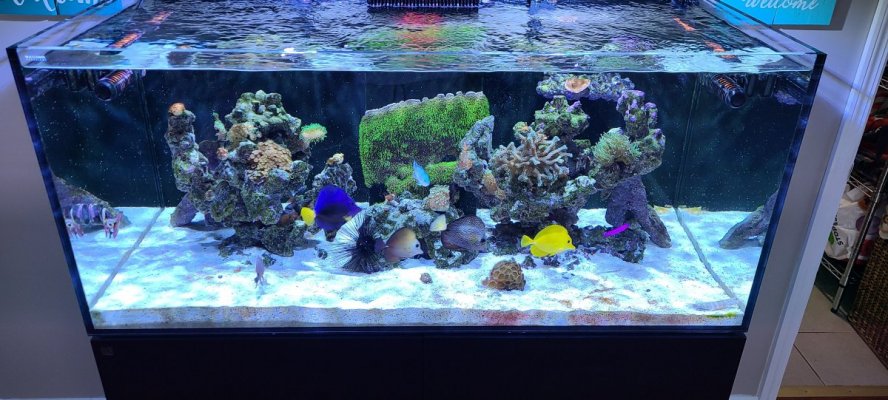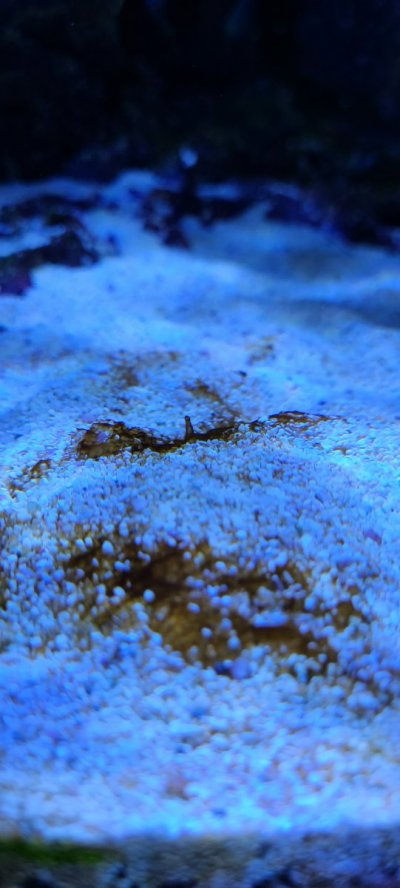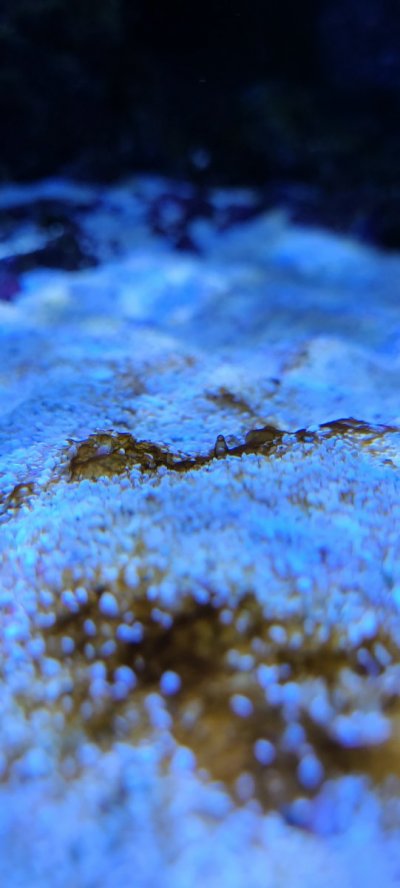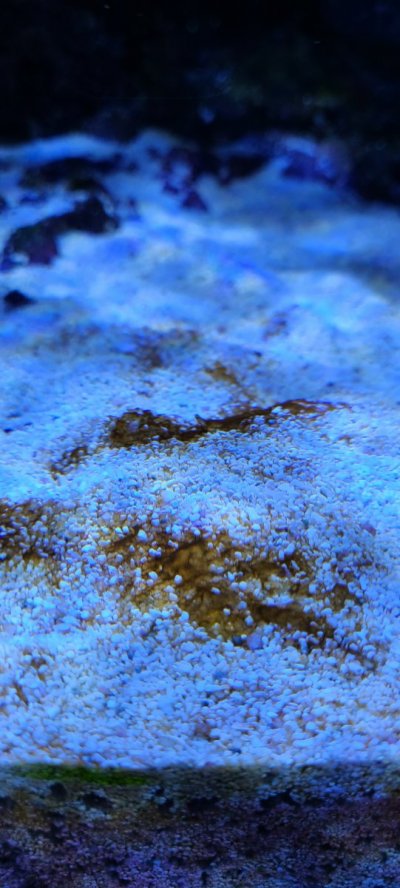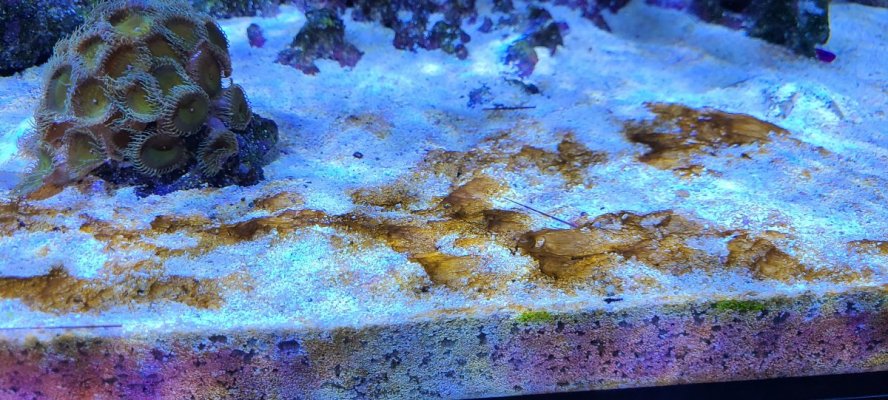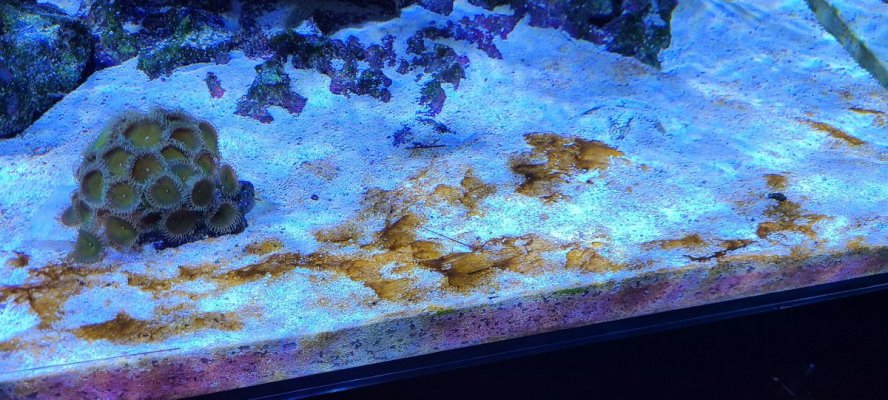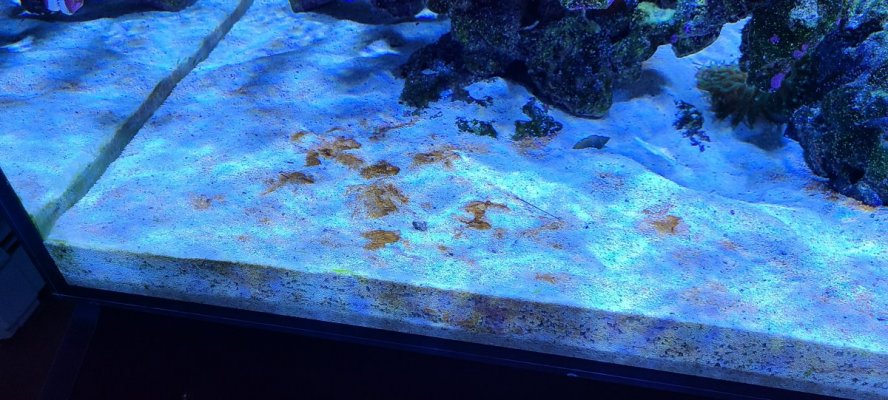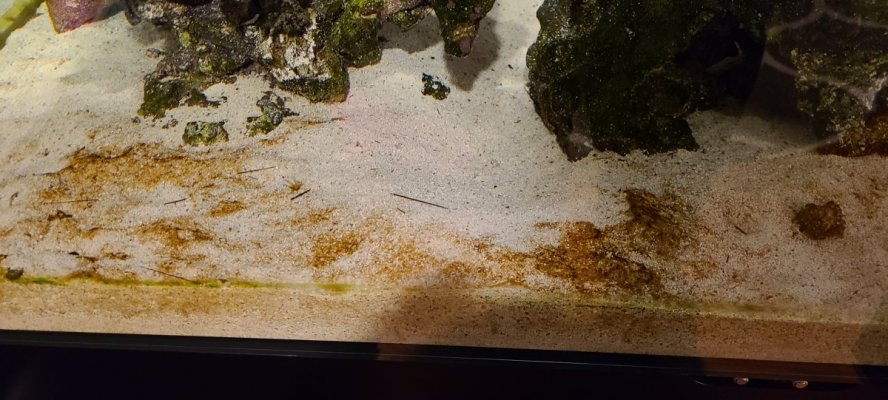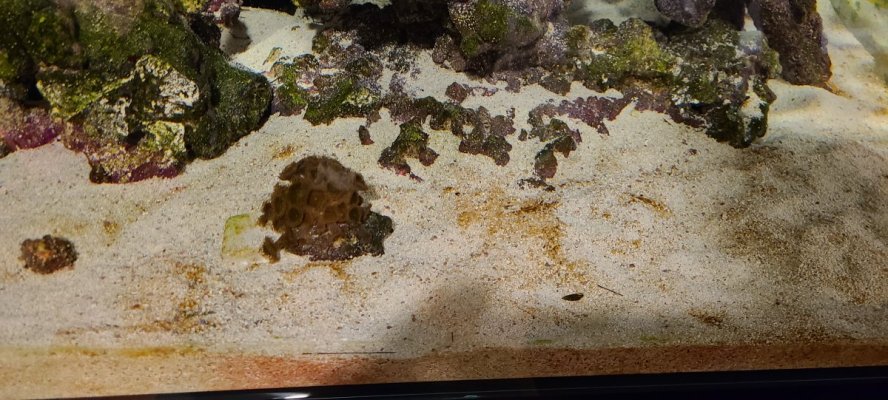Hey, thanks for the reply! I do not have a tds meter but I've replaced all 4 of my rodi systems filters about 2 - 3 months ago. At this point I'm completely at a loss on what to do and thinking about just selling the tank. I've done all the coffe filter/h202 tests.. 3 rounds of redslime remover, 2 3 day total blackout outs and a 5 day total blackout with h202 dosing and bacteria dosing, UV steralizer and this stuff has not slowed down in the slightest bit.I saw you said it gets worse with water changes. Are you using 0 TDS RODI water for your water changes? Maybe your water change water is what is feeding it. If your on facebook you should join Macks Reef support group, tons of good info on fighting all of this type of thing.
#1 thing is ID what you have, get a microscope so you can figure out what you are fighting.
Parameters been checking daily
Alk 9.1
Cal 405
Mag 1320
Nitrate 7
Phos. 0.08
As of today I can see thick patches starting to form, and as for the rest of the sanded I can see slowly Starting to get worse. I'm still dosing MB7 during the day. My 2 gyres alternate every 30 seconds and this stuff just whips around in the flow. Lights run 50% blue only now for a very short period. The cost of daily testing is just not possible anymore. I've exhausted every option as far as fighting this and it hasn't changed a thing. I'm at a loss man. Me and the wife just considering giving up as per maybee this isent for us. Sad



